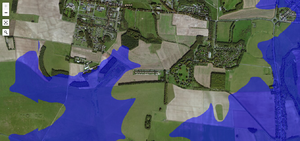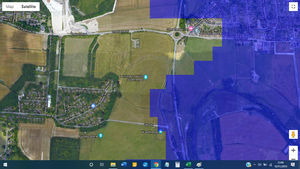Durrington Walls
One of the homes excavated showed evidence of a cobb wall and its own ancillary building, and was very similar in layout to a house at Skara Brae in Orkney.
Also, a large amount of Grooved Ware has been found.
Grooved culture was not an import from the continent but seems to have developed in Orkney, early in the 3rd millennium BC, and was soon adopted in Britain and Ireland.
The earliest examples have been found in Orkney and may have evolved from earlier Unstan ware bowls. The recent excavations at nearby Ness of Brodgar have revealed many sherds of finely decorated Grooved ware pottery, some of it representing very large pots. Many drinking vessels have also been identified. The style soon spread and it was used by the builders of the first phase of Stonehenge. Grooved ware pottery has been found in abundance in recent excavations at Durrington Walls and Marden Henge in Wiltshire.
Smaller quantities of Grooved ware have been found at the nearby site of Figsbury Ring.
Grooved ware was previously referred to as Rinyo-Clacton ware, first identified by Stuart Piggott in the 1950s and named after sites where it was found. Rinyo is a neolithic settlement on the island of Rousay, Orkney. The site at Clacton now lies under the sea.
One way the tradition may have spread is through trade routes up the west coast of Britain. What seems unusual is that although they shared the same style of pottery, different regions still maintained vastly different traditions. Evidence at some early Henges (Mayburgh Henge, Ring of Brodgar, Arbor Low) suggests that there were staging and trading points on a national 'motorway' during the Neolithic and Bronze Age. This evidence perhaps explains how Cumbrian stone axes found their way to Orkney.
Unstan ware, a variation on grooved ware, emerged in Orkney. The people who used Unstan ware had totally different burial practices but managed to co-exist with their Grooved ware counterparts. Some hybrid chambered cairns have emerged in this region, containing architectural features of both the Maeshowe subclass and the Orkney-Cromarty stalled subclasses of cairn.
Grooved ware pots excavated at Balfarg in Fife have been chemically analysed to determine their contents. It appears that some of the vessels there may have been used to hold black henbane (Hyoscyamus niger) which is a poison and a powerful hallucinogen.

